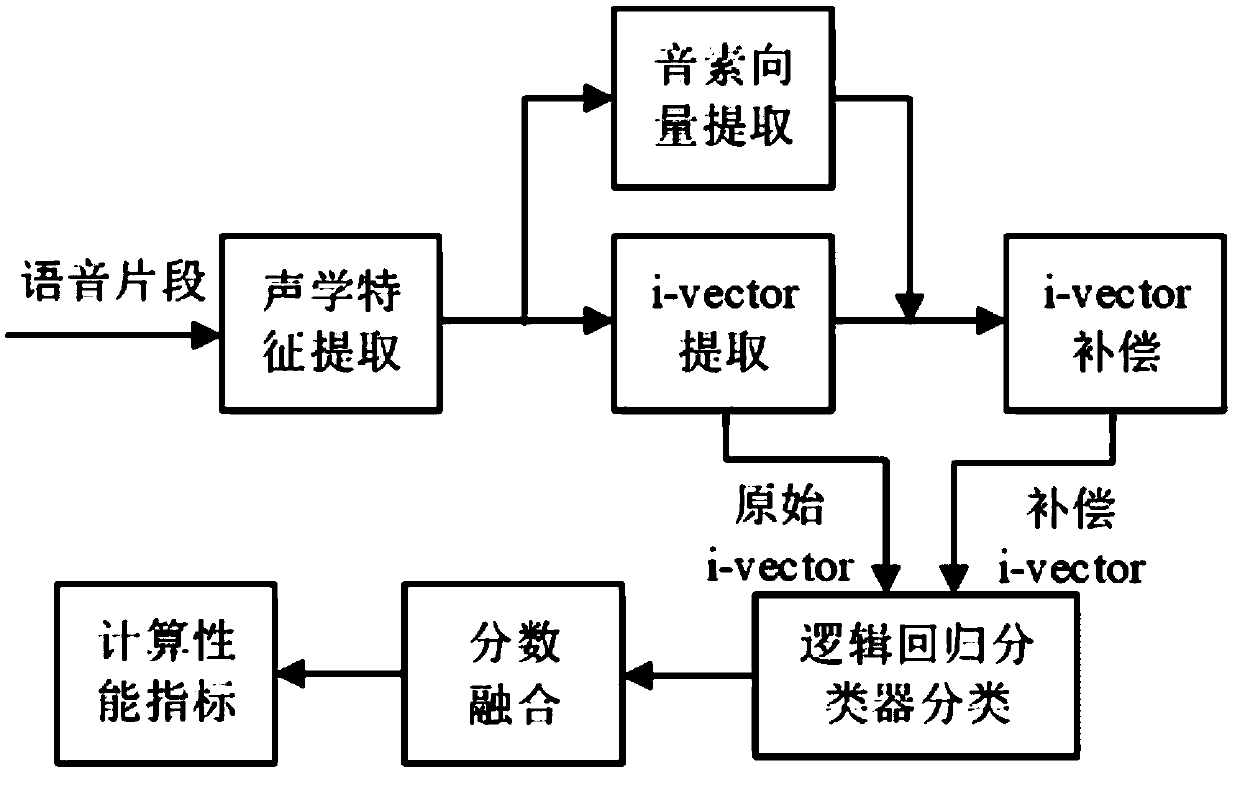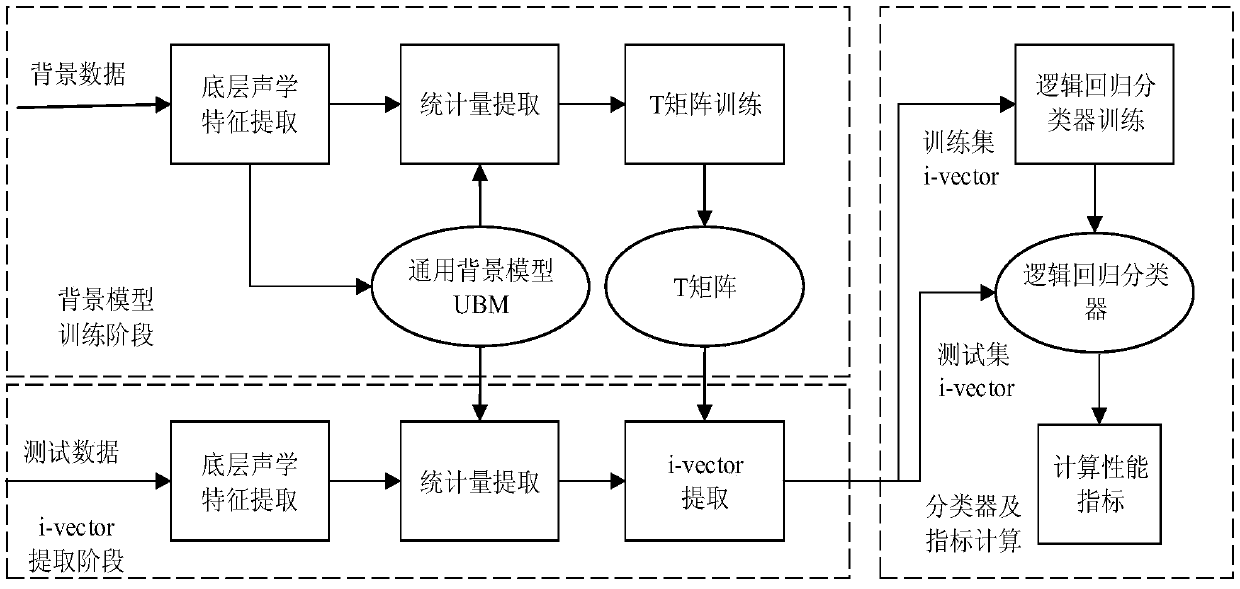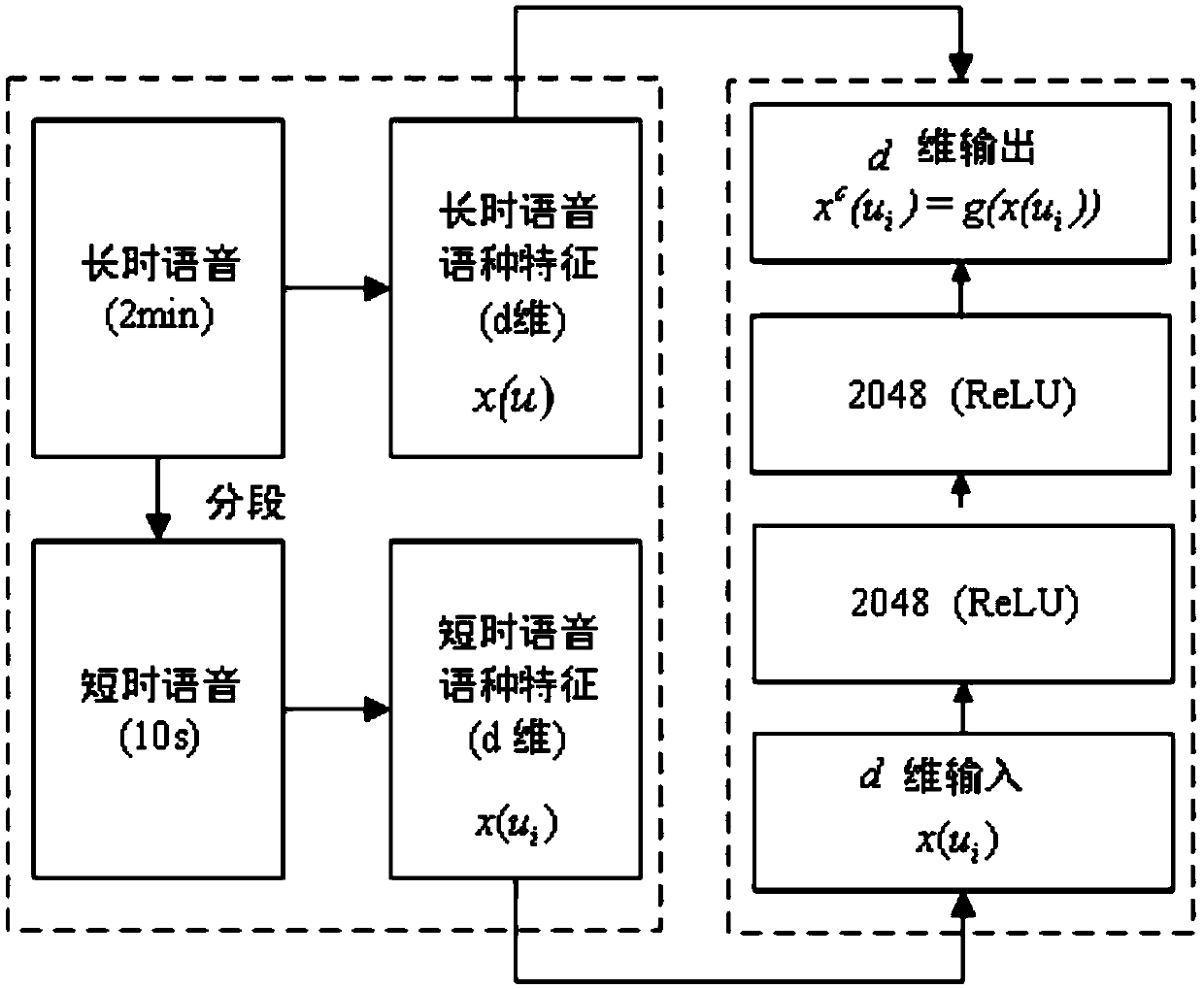Language identification and classification method and device based on noise reduction automatic encoder
A technology for automatic coding and classification of noise reduction, applied in speech recognition, speech analysis, instruments, etc., can solve problems such as increasing model complexity and performance degradation
- Summary
- Abstract
- Description
- Claims
- Application Information
AI Technical Summary
Problems solved by technology
Method used
Image
Examples
Embodiment Construction
[0062] The present invention proposes a TV i-vector language recognition system based on DAE to compensate the language characteristics of different lengths of test speech, which is specifically divided into the following steps: first, the speech is framed and transformed to obtain the underlying acoustic features; second, the original i-vector is extracted -vector, and calculate its phoneme vector at the same time; then, splice the original i-vector and phoneme vector, and send it to the DAE-based compensation network to obtain the compensated i-vector; finally, combine the compensated i-vector and the original i- The vectors are respectively sent to the back-end classifier to obtain two score vectors, which are then judged after the fusion of the score fields.
[0063] Such as figure 1 As shown, the present invention provides a method for language recognition and classification based on a denoising automatic encoder, which specifically includes:
[0064] Step 1) extract the...
PUM
 Login to View More
Login to View More Abstract
Description
Claims
Application Information
 Login to View More
Login to View More - R&D
- Intellectual Property
- Life Sciences
- Materials
- Tech Scout
- Unparalleled Data Quality
- Higher Quality Content
- 60% Fewer Hallucinations
Browse by: Latest US Patents, China's latest patents, Technical Efficacy Thesaurus, Application Domain, Technology Topic, Popular Technical Reports.
© 2025 PatSnap. All rights reserved.Legal|Privacy policy|Modern Slavery Act Transparency Statement|Sitemap|About US| Contact US: help@patsnap.com



